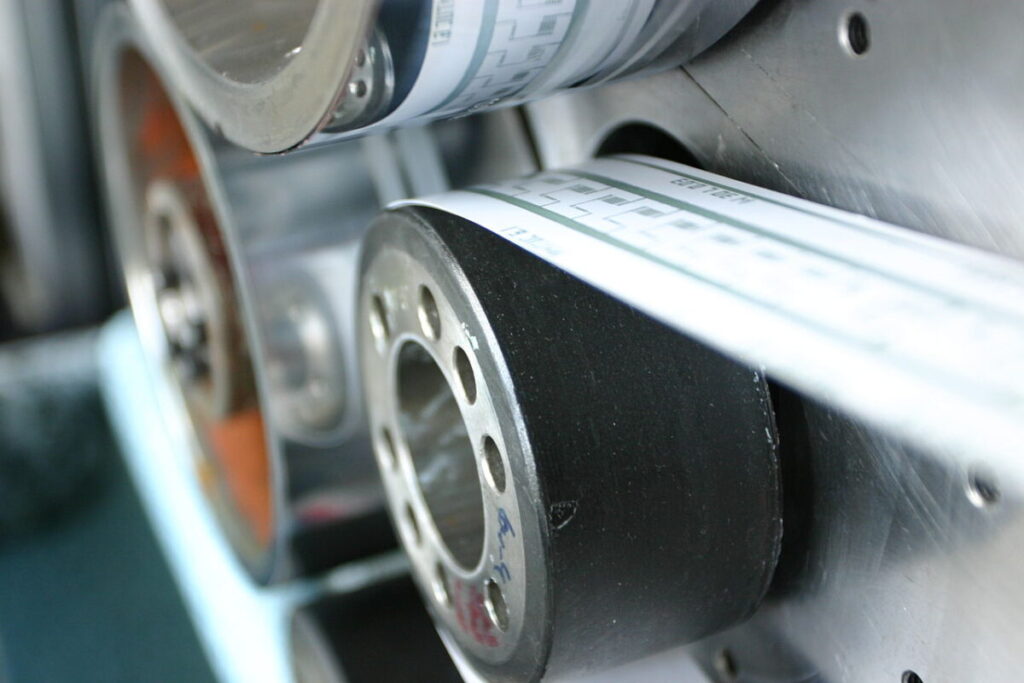An international team of researchers has demonstrated how the research and development of scalable, high-performance organic solar cells can be accelerated by using a high-throughput automated platform. It is based on digital twin technology and roll-to-roll (R2R) printing in a closed system.
An international team of researchers demonstrated a high-throughput platform to aid in the discovery of high-performance organic solar cells suitable for scalable production. They used digital twin technology and roll-to-roll (R2R) printing in a closed system.
The new platform, called MicroFactory, was used to fabricate, characterize and analyze 11,800 non-fullerene acceptor (NFA) organic PV devices within a 24-hour period. After analyzing the first devices, the team used a large data set of manufacturing and characterization parameters to train and optimize machine learning models.
In a subsequent iteration, 1,200 devices with improved PCEs were developed based on “machine learning for the inverse generation of parameters,” according to Leonard Ng Wei Tat, the co-corresponding author of the study, who highlighted that champion efficiencies were up to 9.35% registered , with a “1% improvement in just one cycle.”
It was necessary to adapt off-the-shelf equipment to create the processing and characterization systems necessary for the study. “R2R equipment is commercially available, but most are for graphics printing purposes and are usually not suitable for solar cell printing,” Ng said. pv magazine.
“What we essentially did is apply an age-old, mature technology to produce high-throughput PV cells. The concept of printing solar cells is simple, applying layer after layer of functional material until we build a heterostructure that can act as the various components needed for a solar cell,” said Ng.
The equipment consisted of slot-die coating and annealing subsystems with integrated sensors. “We fabricate the PV cells by depositing functional layers on a strip of polyethylene terephthalate (PET) with a patterned transparent conductive electrode (TCE),” the research team said. The functional layers consisted of a conductive polymer layer, PEDOT:PSS, a silver lattice layer, and zinc oxide nanoparticles.
Multiple sensors collected data from 36 process parameters, which are stored in a database on an external data server for use in the digital twin models. “These models suggested specific changes in vital manufacturing parameters, especially the donor-acceptor (D:A) ratio, and also enabled the integration of new reported scientific knowledge, including the introduction of new interface layers,” the research team said.
The ability to collect a large amount of data allowed analysis and identification of trends and performance factors. For example, Ng pointed to the discovery that humidity control was much more important than temperature control in ensuring good quality devices. “This is very consistent with observed trends that our manufactured solar cells perform better in the low humidity of winter than in summer, despite being produced in the same air-conditioned environment in both seasons,” Ng said.
Popular content
The scientists emphasized that the iterative approach, based on insights from machine learning, represents a strategic optimization as a digital twin-driven alternative to traditional experiment design. “Large-scale solar panel manufacturers, for example, can quickly create simple digital twins of their processes to build large data sets to identify factors that really increase productivity and yield,” says Ng.
The research team needed interdisciplinary skills, including materials science, hardware and software development skills, and machine learning knowledge. “Most researchers only know one domain and it takes a lot of coordination and effort to contextualize things for each other,” says Ng.
The details of the study are discussed in “A printing-inspired digital twin for the self-driving, high-throughput, closed-loop optimization of roll-to-roll printed solar photovoltaics,” published in Cell reports natural sciences. The research team members come from Australia’s Commonwealth Scientific and Industrial Research Organization (CSIRO), Pukyong National University in South Korea and Nanyang Technological University in Singapore.
Looking ahead, the researchers are investigating new material and device architectures for higher efficiency flexible solar cells, and continue to apply artificial intelligence (AI) technologies, digital twin, and inverse parameter generation capabilities in other processes, such as batch processing, and traditional solar -manufacturing. “Ultimately, we hope to develop a unified system that can connect multiple machines, factories and laboratories around the world, which will enable the application of more advanced AI,” Ng said.
This content is copyrighted and may not be reused. If you would like to collaborate with us and reuse some of our content, please contact: editors@pv-magazine.com.

